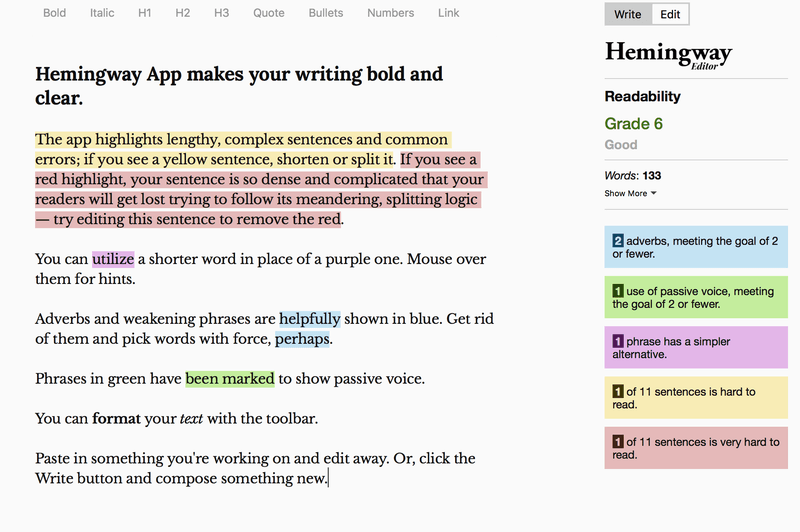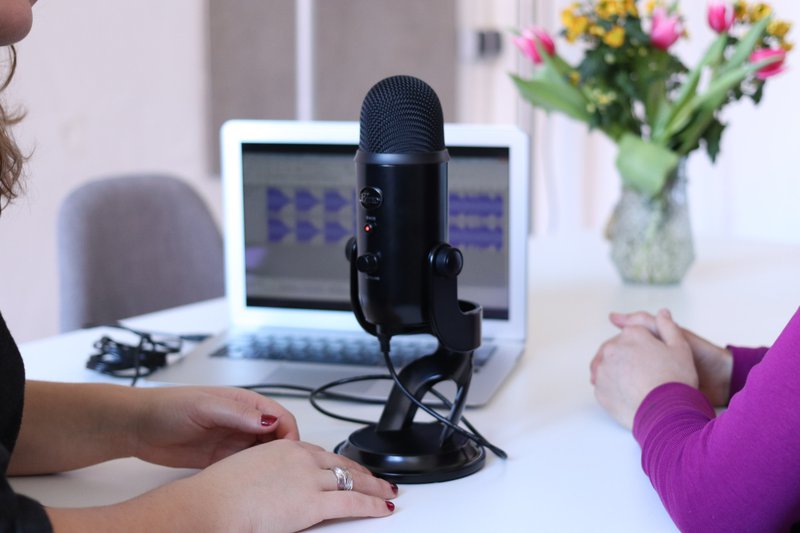Erstellung von Inhalten: Wie man als kleines Unternehmen konsistent hochwertige Inhalte erstellt
Content Marketing Meisterklasse: Fünfter Teil
Ich muss Ihnen etwas gestehen.
Erinnern Sie sich an all die Vorteile von Content Marketing, über die wir im ersten Teil dieser Masterclass gesprochen haben? Die Verbesserung des SEO-Rankings, der erhöhte Traffic, die besseren Leads? Die Tatsache, dass Inhalte Ihnen helfen, Vertrauen und Autorität aufzubauen?
Well, that was only part of the truth. You see, only valuable, relevant, quality content will do that for you. What’s more, it will only have those benefits if you create it over and over and over again – consistency is key.
Als kleines Team von, nun ja, einem, weiß ich, dass nach all dem Strategisieren, Brainstorming und Planung ist es verdammt harte Arbeit, diesen hochwertigen Inhalt zu erstellen. Und wenn dann noch der Druck hinzukommt, etwas zu erstellen, das Ihr Publikum zum Schwärmen bringt, kann das unglaublich einschüchternd wirken.
What you need is a blueprint for creating quality content – which is exactly what I’ve got lined up for you. So roll up those sleeves and learn how to create great content that will help you build a prosperous brand.
This post is Part Five in a brand spanking new Masterclass Series on Content Marketing. We believe it’s an incredibly important topic – and according to a little survey we did, you do too. Trouble is: there is so much content on content marketing out there (talk about meta) and a lot of the intel is conflicting.
Wir präsentieren Ihnen diese Masterclass in Zusammenarbeit mit Anouck Meier, Chief Storytelling Officer bei Ampersand. Anouck ist ein Conversion-Texter und ein Content-Marketing-Stratege, der mit zahlreichen großen und kleinen Marken zusammengearbeitet hat, um ihnen zu helfen, ihre Geschäftsziele durch strategische Inhalte zu erreichen. Lassen Sie uns in einem umfassenden Leitfaden die Geschichte der Inhalte ein für alle Mal klären. Bereit zum Eintauchen?
- Jeroen Corthout, Mitbegründer von Salesflare, einem einfach zu bedienenden Vertriebs-CRM für kleine B2B-Unternehmen

Qualität, nicht Quantität
Anyone can create mediocre content. Some would argue the internet is one huge pile of mediocre content. Creating content that has been published, republished, recycled and repurposed a million times is easy – but it will do nothing for your business.
On the contrary – it could hurt your cause. 😳
I’ve said it before, and I’ll say it again: content marketing is like dating. You never get a second chance to make a first impression. If you’re meeting your in-laws for the first time, you’re not going to show up with a stained sweater, slightly tipsy and only ready to talk about the weather, are you?
Except that’s what so many businesses do when they publish content that is stuffed with keywords and only slightly informative. Content that hasn’t considered the audience’s needs, is outdated, full of spelling or grammar mistakes, inaccurate or plain wrong.
Das schreckt nicht nur Leser (und potenzielle Kunden) ab, sondern auch die Suchmaschinen.

By now it’s a hard rule in content marketing law: Nur gut gestaltete, hochwertige Inhalte können ein Publikum, Vertrauen und Loyalität aufbauen.
Die Qualität Ihrer Inhalte steht auch in engem Zusammenhang damit, wie positiv Ihre Marke von den Suchmaschinen gesehen und angezeigt wird. Wenn Sie in hochwertige Inhalte investieren, tun Sie sowohl Ihrem Publikum als auch den Suchmaschinen einen Gefallen.
When you’re putting content out there, be prepared to show up and give it your best shot.
Bring your mother-in-law a box of chocolates or a bottle of wine and come prepared to woo her with your witty remarks and thoughtful compliments. You’ll be melting hearts (and opening customers’ wallets) in no time. 😍
But hang on – what is quality content?
OK, so great content helps you earn the attention of the people who need your product or service. But how do you define “quality” content?
Does it boil down to metrics like “Time On Site” or bounce rate? The number of backlinks your blogpost acquires over time? The extent to which it goes “viral” on social media?
You could probably make an argument for all those elements (and a lot of marketers do). The problem is: these are all elements that are appraised only after you create and share your content. They’re hardly helpful while you’re down in the trenches, creating content.
What you need is a way of knowing that the content you’re creating for your business will be effective in terms of building authority and winning the trust of customers.
Over the years, while working with numerous entrepreneurs, companies and organisations in developing content that attracts a loyal audience, I’ve been able to distill the characteristics of content that works – and content that falls flat.
Dies sind die vier Regeln, auf die ich schwöre, um qualitativ hochwertige Inhalte zu erstellen.
Vorschrift #1: Autorität schaffen
If you want to stand out with your content and create a competitive advantage, you should create content you’re uniquely qualified to make. Write about those things you’re an absolute expert in and dare to dive deep – don’t just scratch the surface.
Make clear, compelling points and show readers you know what you’re talking about.
By the way: your content creation should showcase your expertise, but that doesn’t mean you have to know everything about anything. Reach out to experts and ask them to write guest blogs (like this one!).
Regel #2: Genau sein
You know what’s even worse than mediocre content? Fake news.
Now, I’m not suggesting that all content creators who are putting out mediocre content are injecting fake facts in their content intentionally (although, unfortunately, some definitely do and they’re often paid to do so). However, some people just refuse to do their homework.
If you’re going to create content that actually gets read, you definitely should!
- Research whatever you’re writing about.
- Verwenden Sie zuverlässige Quellen.
- Prüfen Sie, ob Ihre Informationen sachlich, durch Daten gestützt und/oder recherchiert sind.
- Eine Meinung ist keine Tatsache.
- Und nicht jeder ist ein Experte.

Regel #3: Mach es relevant
Erinnern Sie sich, was ich über die Kardinalsünde des Content Marketing gesagt habe?
Avoid the trap of creating egocentric content and focus solely on what is meaningful and relevant to your ideal reader. As you’re creating content, ask yourself:
- Wie hilfreich ist das für mein Publikum?
- How strongly does it apply to where they’re currently at?
- Biete ich eine klare Anleitung zu den Schritten, die sie unternehmen müssen, um ihr Ziel zu erreichen oder ihr Problem zu lösen?
- Beantworte ich ihre Fragen besser und anders als alle anderen?
- Zeige ich ihnen, dass ich genau weiß, was sie brauchen?
Regel #4: Helfen Sie ihnen, aktiv zu werden
Your audience is hungry for your expert vision – but they’re not looking for an encyclopedia on any particular subject. They just Sie wollen wissen, was zu tun ist.
Often times, they’re looking for just enough information to help them take the next step or make a decision. Help them take action toward their goals: break it down for them in bite-sized chunks and provide concrete, actionable tips and advice.
Prozess der Inhaltserstellung auf der Höhe der Zeit
Now that you know what to aim for with your content, let’s take the guesswork out of the actual content creation process.
1. Schreiben
I’m going to talk about the writing process because … well, that’s what I do most of the time. Refer to the section on content formats below for other types of content like podcasts and videos.
Was auch immer es ist, der Erstellungsprozess folgt ziemlich ähnlichen Regeln:
- Erstellen Sie nur für einen Leser und nur für einen Leser. Don’t try to write for anyone who may just be interested. This will force you to focus on your ideal reader, use their language and tailor it to their specific needs.
- Same goes for what you’re writing about: sich auf eine Kernbotschaft beschränken oder Idee. Vermeiden Sie Abschweifungen oder den Versuch, eine Vielzahl von Ideen in einem einzigen Beitrag zu erklären.
- Put the benefit of your content where it can’t be ignored: the “what’s in it for me” should be immediately obvious from reading the title (and the intro).
- Machen Sie Ihre Inhalte leicht konsumierbar: don’t make your reader hunt down the information they’re looking for. Use titles, subtitles, short paragraphs, bullets,… to structure your writing and guide them through it.
- Cleverer als klar. You want your reader to relate to you and get value from your content. What you don’t want is overwhelming them with jargon or overly complicated concepts. Don’t make them work hard to understand what you’re saying (because if your message isn’t immediately obvious, they’ll click away in a heartbeat).

Need more guidance on actually writing your content? In Part 6 of this Masterclass, we’ll take a deep dive into writing copy.
2. SEO-Forschung
SEO has come a long way – search engines are doing a much better job at understanding and processing how we communicate.
They’re actually starting to speak human – which is great news for every content creator who’s focusing on good writing (rather than on stuffing their content with keywords and sounding like a robot).
Good writing is key but that is not to say that including a couple of keywords in strategic places won’t help you rank well. Which means more eyeballs on your content. 🤓
Die SEO-Recherche hilft Ihnen auch bei der Entscheidung, ob es sich lohnt, in ein bestimmtes Thema/Schlüsselwort zu investieren, indem sie Ihnen das Suchvolumen zeigt und wie schwer es ist, für dieses spezifische Schlüsselwort zu konkurrieren.
So sieht ein grundlegender SEO-Forschungsprozess aus:
- Schreiben Sie einige Fragen auf, die Ihr idealer Leser aufgrund seiner Probleme und Ziele haben könnte.
- Führen Sie eine Keyword-Recherche zu diesen Fragen durch. Verwenden Sie Keyword-Recherche-Tools, wie Google Keyword Planner, KWfinder, SEMRush, Moz Keyword Explorer oder Ahrefs. Geben Sie Ihren Suchbegriff in Google ein und achten Sie auf die automatisch ausgefüllten Suchanfragen. Oder scrollen Sie einfach zum Ende der Seite und sehen Sie sich den Abschnitt "Verwandte Suchanfragen" auf den Suchmaschinenergebnisseiten (SERPs) an.
- You’re looking for keywords that have significant monthly search volume (MSV) and a reasonable keyword difficulty, corresponding to your domain authority. If you haven’t been blogging for long and your domain authority is still low, the best thing to do is to target long-tail, low-volume keywords (200-1000 MSV) with minimal keyword difficulty (<30). This will give you a good chance at ranking for keywords and getting your content in front of your audience.
So once you have your first draft ready, check that you’ve covered the following:
- Verwenden Sie Ihr Schlüsselwort in der Titel
- Fügen Sie Ihr Schlüsselwort oder Ihre Schlüsselwortphrase in eine H2
- Make sure the keyword appears at least once in the body of the post (but don’t overdo it!)
- Verwenden Sie einen Alt-Text für Bilder (einschließlich des Schlüsselworts, wenn es angebracht ist)
And that’s all really – it doesn’t have to be more complicated than that.
3. Bearbeitung von
Before editing your piece, it’s always a good idea to walk away. Just let it sit there for a while, let it marinate and come back to it with clean eyes.
Release attachment and forget that it’s actually you who has written the piece. As an editor, you should have no problem editing the piece to produce a more coherent and interesting post.
Wenn Sie nicht, wie Stephen King sagen würde, kill your darlings, können Sie Ihre Arbeit von einem Teammitglied oder einem externen Redakteur überprüfen lassen.
Wenn Sie schließlich zu Ihrem Entwurf zurückkehren, konzentrieren Sie sich auf Lesbarkeit, SEO, Aufforderungen zum Handeln, Links, Rechtschreibung und Grammatik. Einige Tools, die Ihnen helfen, Ihre Bearbeitungszeit zu verkürzen, sind Grammarly und Hemingway Editor.

Look out for active voice, clear language, short sentences and paragraphs and plenty of whitespace. Remember to review past content for opportunities to link to your post once it’s published.
Während Ihre Inhalte noch frisch im Gedächtnis sind, schreiben Sie einige Beiträge für die Werbung in sozialen Medien und für Ihre E-Mail-Newsletter.
Fügen Sie Bilder oder zumindest ein effektives Featured Image hinzu: Es hat sich gezeigt, dass Sie dadurch mehr Klicks, mehr Favoriten und mehr Social Shares erhalten. Besuchen Sie Websites wie Unsplash oder Pexels für Fotos und verwenden Sie dann ein Tool wie Canva oder Visme, um den letzten Schliff zu geben. Wenn Sie individuellere oder einzigartige Bilder für Ihr Projekt benötigen, können Sie einen Bildgenerator wie Picsart verwenden, mit dem Sie ganz einfach Bilder erstellen können.
4. Veröffentlichung
Isn’t publishing just hitting a button and being done with it? Yes and no. If you’re just starting out, it can be a matter of uploading your piece immediately. Or, you can try to maximize its impact by scheduling it for an optimal time.
If you’ve been at it for a while and you’re committed to a regular publishing schedule, your audience will expect to see your posts coming out at specific times – you should definitely try to stick to it!
If you have a lot of content to publish, it’s probably a good idea to invest in a content planning tool, as we’ve discussed in part 4 of this Masterclass.
Or if you want to automate and streamline the publishing process, opt for a tool like Story Chief (that’s what we used to write, publish and distribute this post). Some companies prefer to use a CMS platform that can store, manage, and publish bulk content like blogs, videos, and website landing pages.
Don’t forget to link to the blog post from past content and to schedule your social media content too.
Überprüfen Sie schließlich die Analysen in den nächsten Tagen, nach einer Woche und nach einigen Wochen, um die Leistung zu bewerten.
Andere Inhaltsformate erstellen
Blog posts are a great place to start with your content marketing, as they have a very low barrier to entry. You don’t need a designer or any special equipment. You hardly need any technical knowledge. Just start writing and you’re good to go.
A lot of the guidelines for written content apply to other types of content too. Let’s take a look at the specifics of putting together some other popular content formats: videos and podcasts.
Videos erstellen
Jüngsten Untersuchungen zufolge nennen 51% der Marketingfachleute weltweit Videos als die Art von Inhalten mit dem besten ROI. Soziale Videos werden 1200% häufiger geteilt als Text und Bilder zusammen.
However, if you don’t consider yourself the next Casey Neistat or if you don’t have a dedicated video team like Gary V, the idea of producing video may seem overwhelming and intimidating.
But rest assured – you don’t need (a lot of) specialized gear or a studio. Lord knows those cat videos that draw millions of viewers haven’t exactly been through professional production processes. 😼 If you can tell a compelling story, it doesn’t matter if you shoot it on your iPhone or a professional camera. There are even fully customizable after effects templates that you could try out!
You don’t even need a script – but you do need a plan: just think about what you’re going to say and prepare a few bullet points to structure your video. Don’t forget to include a call to action at the end!
Schließlich sollten Sie Untertitel einfügen, da die meisten Videos ohne Ton angesehen werden.
Produzieren von Podcasts
Podcasts sind nach wie vor in aller Munde. Wenn Sie Ihre Inhalte in einem Audioformat anbieten, ziehen Sie einen Teil Ihres Publikums an, das das Hören von Inhalten dem Lesen langer Blogbeiträge vorzieht.
Sie können ohne großen Aufwand mit der Produktion Ihres eigenen Podcasts beginnen.
- Sammeln Sie Ihre Ausrüstung. Eine grundlegende Podcasting-Einrichtung besteht aus einem Mikrofon und einer Software für die Aufnahme Ihrer Stimme. Ich empfehle die Verwendung eines externen USB-Mikrofons (im Gegensatz zum eingebauten Mikrofon Ihres Computers), einer Audioschnittstelle und professionelle Aufnahmesoftware.
- Finden Sie Ihre Gäste oder entwerfen Sie Ihre eigenen Episoden. Instead of writing an outline for a blog, you’re now making outlines per podcast episode. If you’re doing an interview-style show, gather a list of guests and put together a template outreach email.
- Bearbeiten Sie Ihren Podcast. Full transparency – I’m in my third season of podcasting now and I still haven’t edited a single episode. Luckily, there are tons of affordable options for hiring a sound engineer or podcast producer to stitch your episodes together. All you really need is 4 files: your main audio file or interview, an intro, outro, and a jingle.
- Geh hinaus und lass dich hören. You now have a podcast episode that’s ready to be uploaded to iTunes, Spotify, Hefter, SoundCloudoder an einem anderen Ort veröffentlicht und zusammen mit den übrigen Inhalten beworben.

Beständig bleiben
Content creation is a marathon – not a sprint. 🏃♀️
Um von den Vorteilen des Inhaltsmarketings zu profitieren, sollten Sie Ihre Bemühungen konsequent fortsetzen und sich an Ihren Inhaltskalender und Ihren Plan zur Erstellung von Inhalten halten.
If you’re a small team, get organized so you’ll work as effectively as possible.
Erstellen Sie Ihre Inhalte in Stapeln, um produktiver zu sein, und holen Sie sich bei Bedarf Hilfe: Stellen Sie einen Content Manager, einen Redakteur oder einen Texter ein. Arbeiten Sie mit Partnern zusammen und bitten Sie Gastblogger um Beiträge. Wenn Ihnen das Schreiben zu anstrengend ist, nutzen Sie einen Transkriptionsdienst und sprechen Sie Ihre Inhalte ein (oder bitten Sie Ihren Assistenten, Sie zu interviewen und eine Zusammenfassung zu schreiben).
Creating a sustainable content creation process that you can stick to over time requires a lot of work and effort. Hey – if it was easy, everyone would do it. But if you get it right, you’ll be well ahead of the pack.
Wie sieht Ihr Prozess zur Erstellung von Inhalten aus? Und sind Sie dabei konsequent? Lassen Sie es uns in den Kommentaren wissen.
And don’t forget to check back next week for Part Six of our Content Marketing Masterclass about writing copy!

Wir hoffen, dass Ihnen dieser Beitrag gefallen hat. Wenn ja, empfehlen Sie ihn weiter!
👉 Sie können @salesflare folgen auf Twitter, Facebook und LinkedIn.
if(window.strchfSettings === undefined) window.strchfSettings = {}; window.strchfSettings.stats = {url: “https://salesflare.storychief.io/content-creation?id=1166271153&type=2”,title: “Content Creation: How to Create Quality Content Consistently as a Small Business”,id: “b4bf56dd-9b24-4318-a472-b8522fe85e05”}; (function(d, s, id) { var js, sjs = d.getElementsByTagName(s)[0]; if (d.getElementById(id)) {window.strchf.update(); return;} js = d.createElement(s); js.id = id; js.src = “https://d37oebn0w9ir6a.cloudfront.net/scripts/v0/strchf.js”; js.async = true; sjs.parentNode.insertBefore(js, sjs); }(document, ‘script’, ‘storychief-jssdk’))- Measuring Content Marketing ROI: Show Me The Money - 10. Oktober 2019
- Wiederverwendung von Inhalten: 4 einfache Wege, um mehr aus Ihren Inhalten herauszuholen - 3. Oktober 2019
- Die zehn Gebote der effektiven Inhaltsverteilung - 26. September 2019
